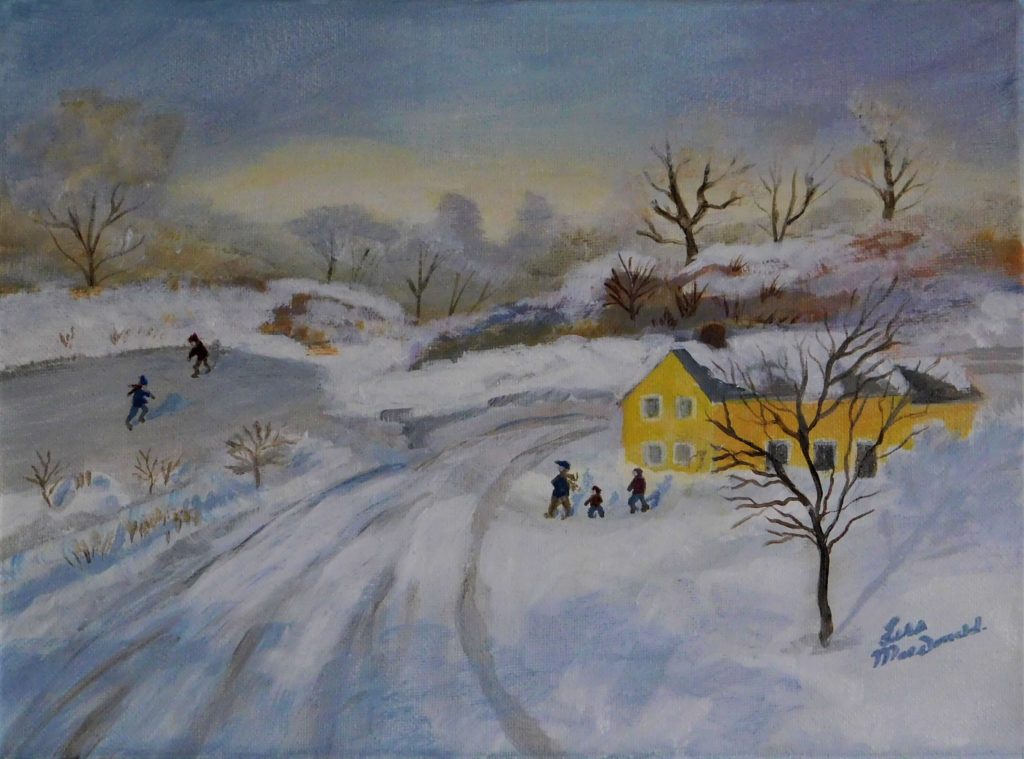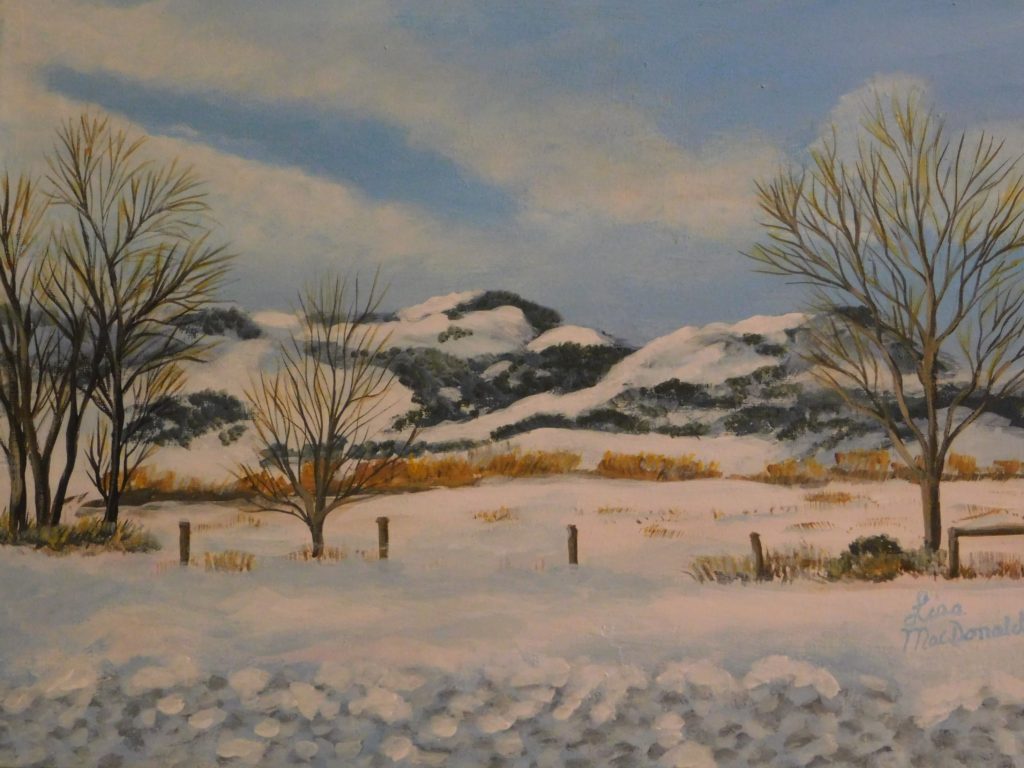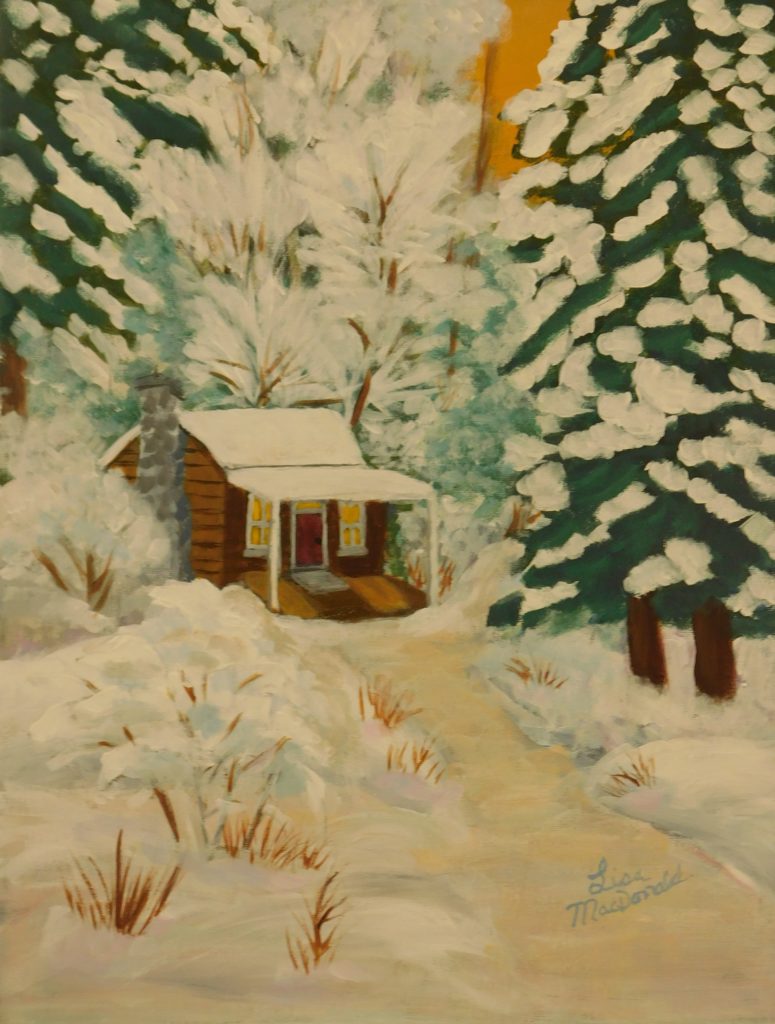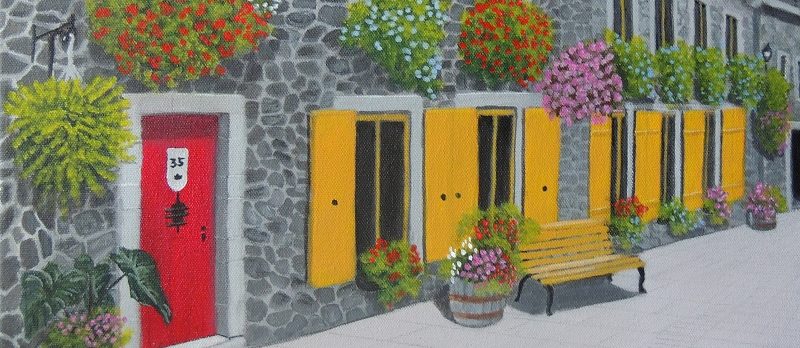What Color is Snow?
- Comments Off on What Color is Snow?
- Feb, 07, 2021
- By Lisa MacDonald
- Charcoal/Graphite/color pencil
Snow Has Many Colors
As I dropped off my winter painting to McMaster Innovation Park for the 31st Exhibition, someone comment that snow was hard to depict and that my painting was beautiful. I painted this one in only three colors: Paynes Gray, white and a bit of black, as a monochromatic.
The idea was to limit the colors; however, with a full array of colors snow can be colorful. We’ve all seen snow that shimmers like diamonds in the sun, but for the purpose of making a painting come to life, you sometimes have to use your imagination and pallet.
In the paintings below, I added a lot of colors already in the landscape to enhance the snow especially on the snowy road. While winters tend to be bare trees, snow, slush with the occasional evergreen tree, paintings can depict snow as blue, purple, beige, muted peach or light pink, and of course gray. Gray does not need to consist of black and white but can be mixed using many colors.
For example: Here is a winter monochromatic (paynes gray, black, white)

Combining equal parts of complementary colors will result in a “complementary gray.”
- Red and green
- Yellow and purple
- Blue and orange
Combine red and green to get a flat gray, but adding a bit more of one color than the other will give you a tint. Adding more red, yellow, or orange will result in a “warm” gray, but adding more green, purple, or blue results in a “”cool gray.
I also mix ultramarine blue, raw umber and white to get gray. You can experiment with a variety of colors that can be used as gray for shadows. Paynes Gray is very blue but mixed with white it makes a blue–gray. Experiment!



